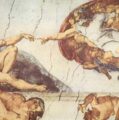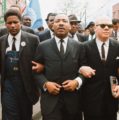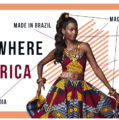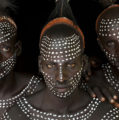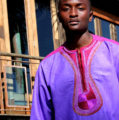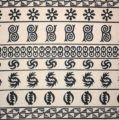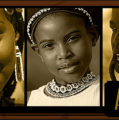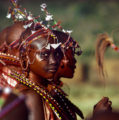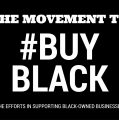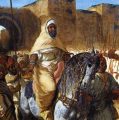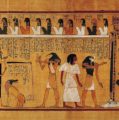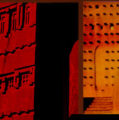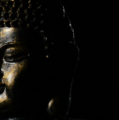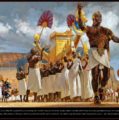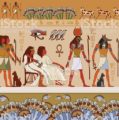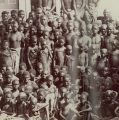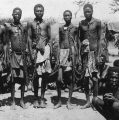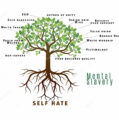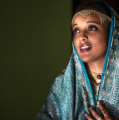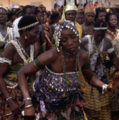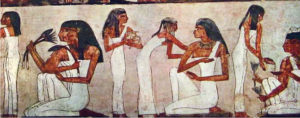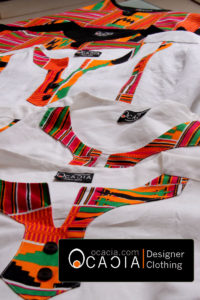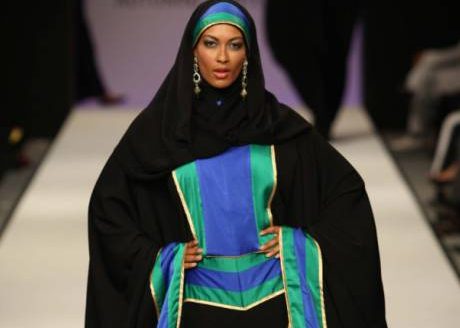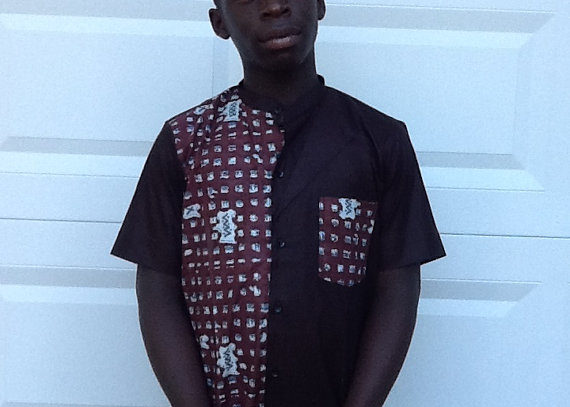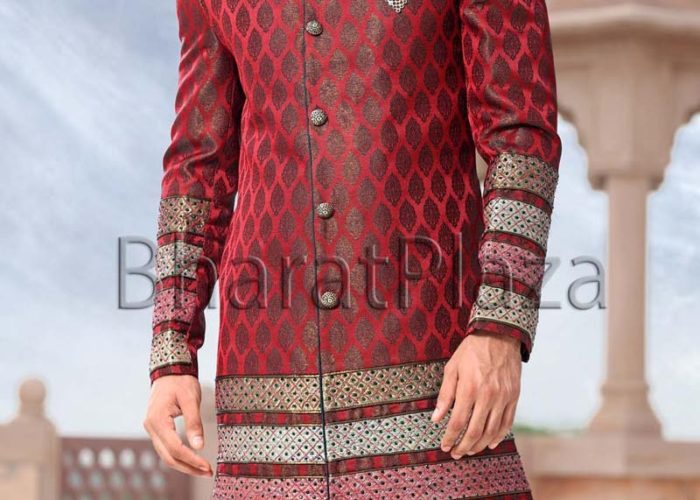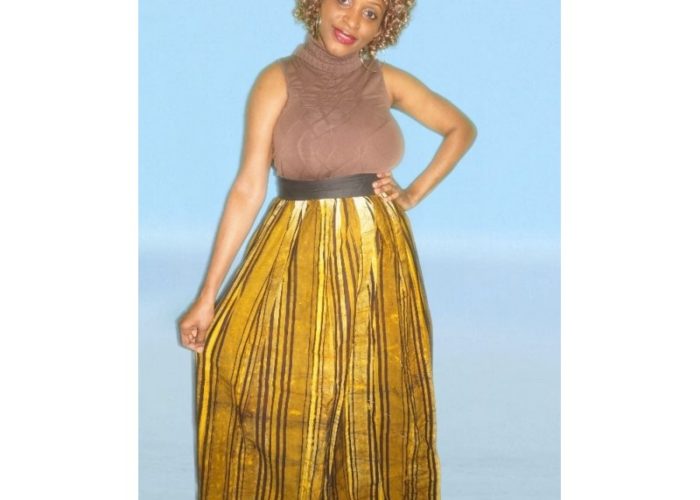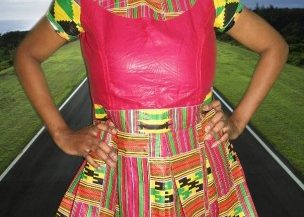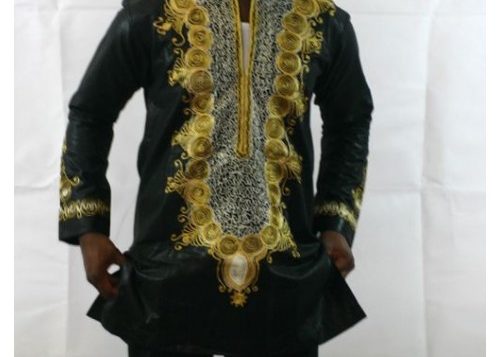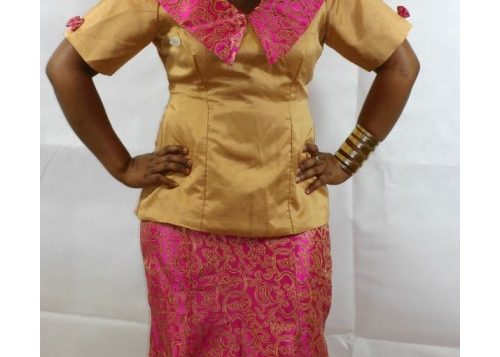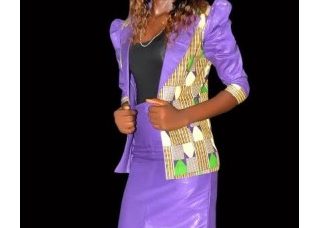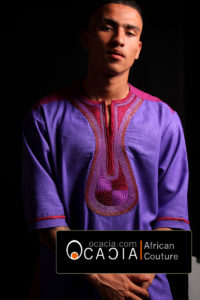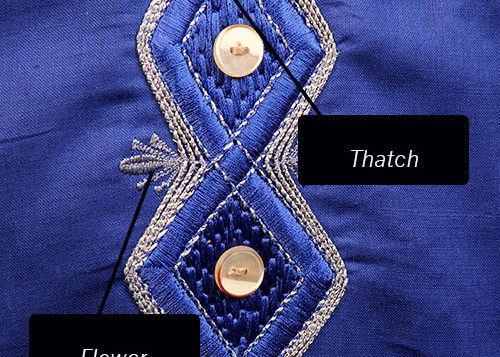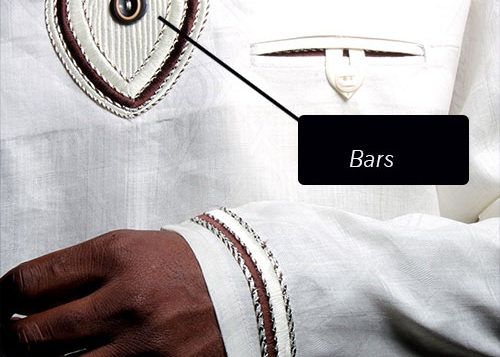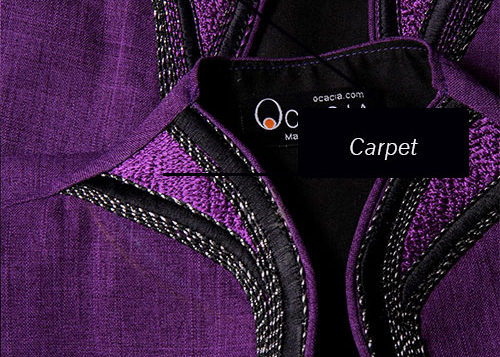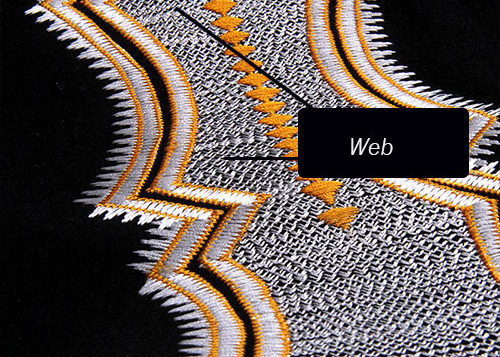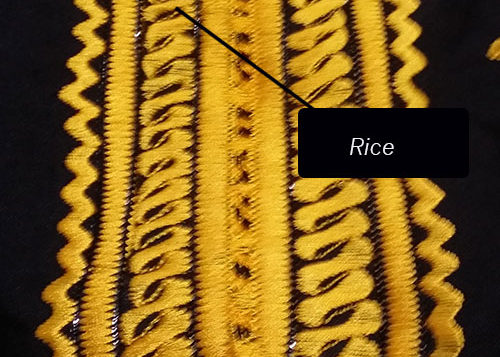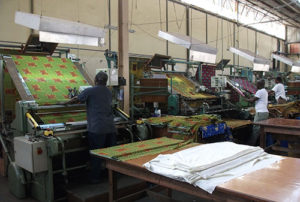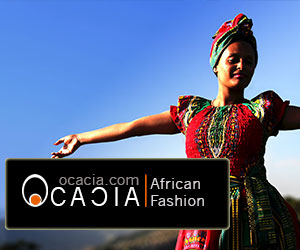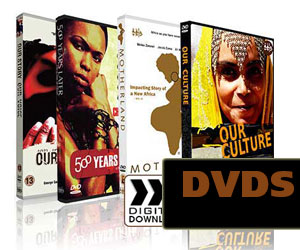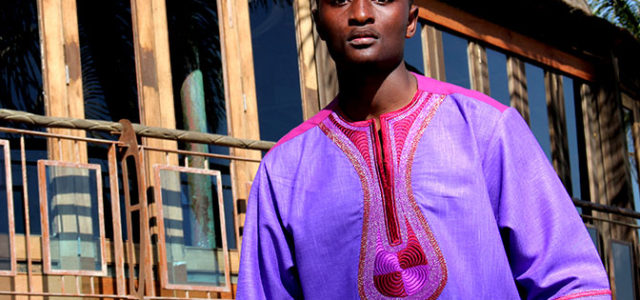
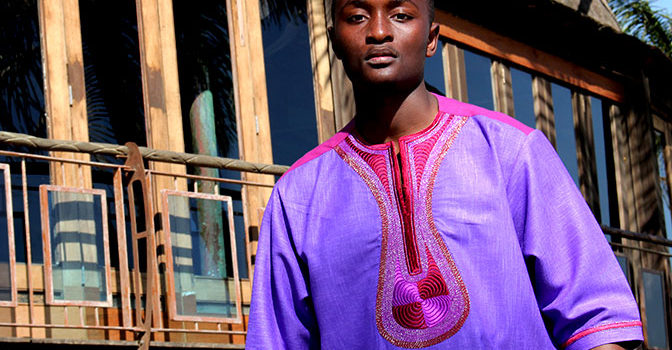

The Crisis of African Fashion
This article is a collection of comments, articles, published on social media.
Please Read BBC- African culture of Legacy of Colonialism
African clothes are more than just costumes worn at cultural ceremonies. They have a place in our modern world as cultural, economic and political statements about African identity. A statement of fashion and equally a statement of cultural agency.
The word Dashiki comes from the Hausa word Yarciki which means shirt. Usually it is worn with a Kufi cap which is worn in Islamic communities in Africa and the African Diaspora along with pants. A common form is a loose fitting pullover garment with an ornate v-shaped collar decorated with embroidery both on the neck and the sleeve. While some parts of Africa were still using animal skins when Europeans first arrived in Africa, garment manufacture is thousands of years old. Linen, for example, was first used in Ancient Egypt.
Today what is called African is usually made in China and sold back to Africa. And the Chinese are not copying African designs and reprinting them, no–it is worst than that. China is replacing European designs which Africa calls African. 1)African culture of Legacy of Colonialism
LET US TALK MONEY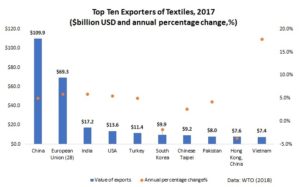
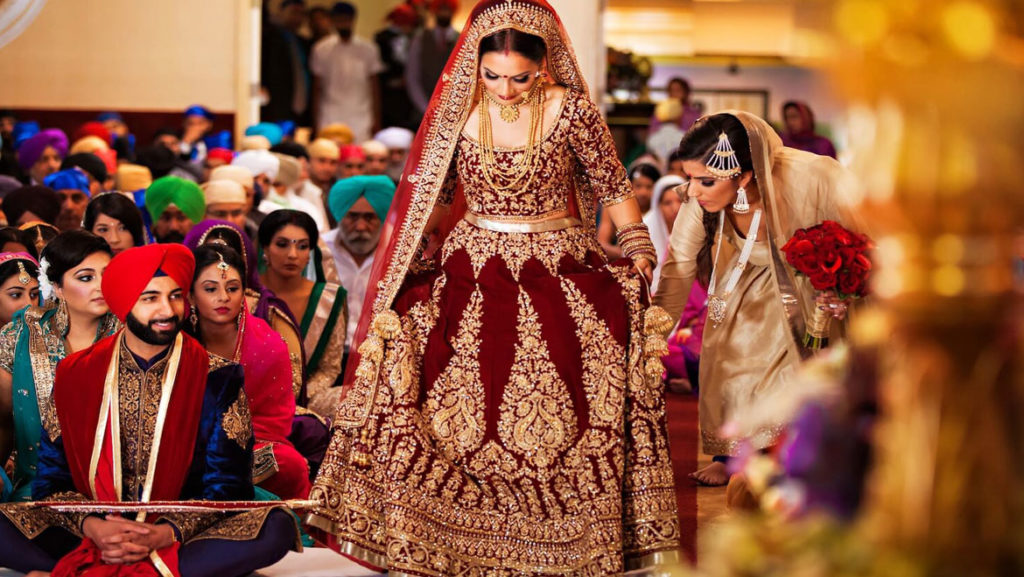
How much money goes back to Indian fashion?
Let us look at an Indian wedding through an economic lens to understand why people with strong cultures do well. The Majority of Indian weddings use Indian cultural clothes– Not just the bride and the groom but all of those people in the background. The only people who make Indian clothes are other Indians. Do you guys see where I am going? Now add to the fact that Indians love to get married and there is always a wedding somewhere in the world what do you think that means for Indian dressmakers and Indian fabric? Do the math.
Two massive advantage Indian fashion has over us is they make their own fabric just for their cultural clothes: nothing comes from China. It makes no difference where Indian people are (South Africa, UK, Kenya, India, America) most of them buy their cultural clothes even if only for special events. In the average Indian person’s house you will find something Indian made by Indians. It would be fair to say most Africans have nothing to do with African clothes. So India has a 1 billion customer base. Not even 10% of Africans in Africa, wear African clothes, let alone African clothes made by Africans. And if you are confused at what this means just Google Indian clothes and see how many online stores they have selling clothes. It is so bad that they are more Indian clothing outlets in South Africa than African clothing outlets and they are only 2.5% of the population. In one mall in Durban there were 4 Indian hi-end clothing stores. How many African outlets? ZERO. They even have global brand names like MEMSAAB representing Indian attire at every price/quality point: that is the power of love of self. Bespoke can go up to $2000 US Dollars. Yet selling bespoke clothes made from linen for $80 -$120 dollars to Africans gets “Those clothes too expensive.” It is an identity problem followed by a crisis of self valuation.
And the Muslim Indian world is the same. Every Friday everyone 1.5 billion people wearing their cultural clothes just for Jummah. Another high percentage of them wear these clothes everyday in places like Pakistan and Arabia.
AFRICAN AESTHETIC
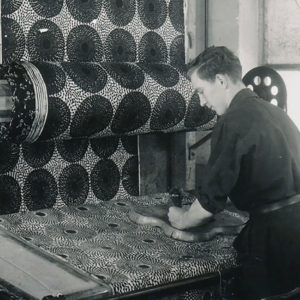
African Or Colonial?
“African clothes” what makes clothes African? African clothes are modern clothes associated with the African continent, namely West African clothing popularized by the Diaspora. If one goes back 500 years most of Africa would not call these clothes African. That came when clothes originally associated with Islam became “Africanized then later spread to non-Muslims in Africa. The spread rapidly increased during colonialism and there were some who wore European clothes (Mbeki) and then there were clothes worn by African Muslims(Umaru Yar’Adua). The Kufi hat is one clear example of items of clothing that were formerly associated with one religious community spreading to other communities and cultures and eventually ending up in the Diaspora with a new meaning (African awakening). Today we are seeing the spread of these West African clothes to South Africa, with modifications (like the ANC colors and the Zulu shield) giving them a SA feel.
Fashion has two components, the science (like the rules of construction) and the art (which obeys another set of rules, the rules of taste and expression). Real designers play in both arenas.
SCIENCE OF DESIGN
All designs are already created, it is the mission of the person attuned with the forces of creation to discover them– ‘Alik Shahadah

Herbie on the Piano
Art is art, it is a creative process. We could be talking about making a new piece of music or designing a new sportbike. Designing or the creative process has in two components: science and the art. The science as it relates to fashion dictates the function of a garment, the rules that are required to make a garment fit and function–they cannot be altered they must be obeyed. In a car it would be things like aerodynamics, brakes, doors, etc. In music it would be time signature, keys, staying in tune, counterpoint, etc. The creative or design part of it would be where the artist can express themselves underneath the functional science each genre of design allows.
The minute you decide on an option your next option is limited. It is a mathematical equation. So if you start to create music or come up with a new design for a shirt, the minute you decide you want to use White linen, your next set of options exponentially decreases. When you decide you want to mix it with a Dashiki brown and cream print, your next set of options decrease exponentially even more. On and on until your final design choice is almost zero. And music is the same. Once you decide the tempo, the key, the melody your next decision is exponentially diminished until the design/music reveals itself. And this is also true for film. Once you set the mood, the color the aesthetic the film gets narrower. 2)‘Alik Shahadah, The Creative Process (unpublished)
The function of the designer is to create clothes which are used as an adornment. 3)Cite book|title = Fashion Buying and Merchandising: From mass-market to luxury retail|last = Hebrero|first = Miguel|publisher = Createspace|year = 2015|isbn = 978-1517632946|location = London|pages = 64
HISTORY
Our knowledge of cultures varies greatly with the climatic conditions to which archaeological deposits are exposed; the Middle East and the arid fringes of China have provided many very early samples in good condition, but the early de
velopment of textiles in the Indian subcontinent, sub-Saharan Africa and other moist parts of the world remains unclear. In northern Eurasia peat bogs can also preserve textiles very well.
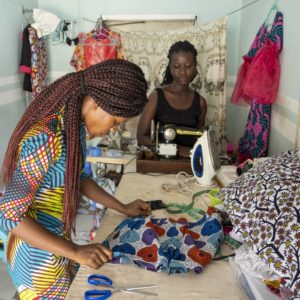 When we look at African clothing it is easy to misunderstand why it is worn. Someone from the West , the Caribbean and even Africa may adopt African clothing as a fashion statement, but not see the meaning behind the costume. Traditionally African clothing is cultural and is designed to suit African people, to combat climate, to fit the shapes of African women and to include care. Materials are mostly made in Africa, and work is done by Africans in Africa. It is always a most beautiful sight to see African people dressed in traditional African clothing. It fits in with the background in Africa, it suits their facial structure and complexion and is fitted to suit the shape of the African body. Apart from that it covers the body and therefore is acceptable in every possible setting, whether it be formal, informal, at home or at school.
When we look at African clothing it is easy to misunderstand why it is worn. Someone from the West , the Caribbean and even Africa may adopt African clothing as a fashion statement, but not see the meaning behind the costume. Traditionally African clothing is cultural and is designed to suit African people, to combat climate, to fit the shapes of African women and to include care. Materials are mostly made in Africa, and work is done by Africans in Africa. It is always a most beautiful sight to see African people dressed in traditional African clothing. It fits in with the background in Africa, it suits their facial structure and complexion and is fitted to suit the shape of the African body. Apart from that it covers the body and therefore is acceptable in every possible setting, whether it be formal, informal, at home or at school.
CLOTHES ARE CULTURE AND POLITICS
Clothes are our culture. Ocacia focus on modern African clothes which are drawing on contemporary styles with Traditional aesthetics. We study the clothes we make, not just throw a giraffe and a drum on a dashiki and say “There you go” Serious people take their culture seriously. And we make clothes with some kind of symbolic meaning and for political purposes. And this attitude to African culture is dying and we want to make sure we do our part to add back value and purpose to the ancient craft.
There are people in Africa who make these shirts with these symbols on it and do not have a clue what they mean. It is like the African mask industry which has lost all its spiritual connection. They are now just masks for tourist consumption. At Ocacia we are giving you clothes with the history, culture, and meaning behind every stitch. We not randomly throwing design elements into garments because they are cute. Our Kua (aka Kuba top) is based upon our research in the DRC, our Ethiopian Saba top is based upon a study of the Ethiopian Cross. It is respect for the cultures we represent. It is a terrible day when Africans sing songs and make clothes with total ignorance.
ONLY FOR NIGERIANS?
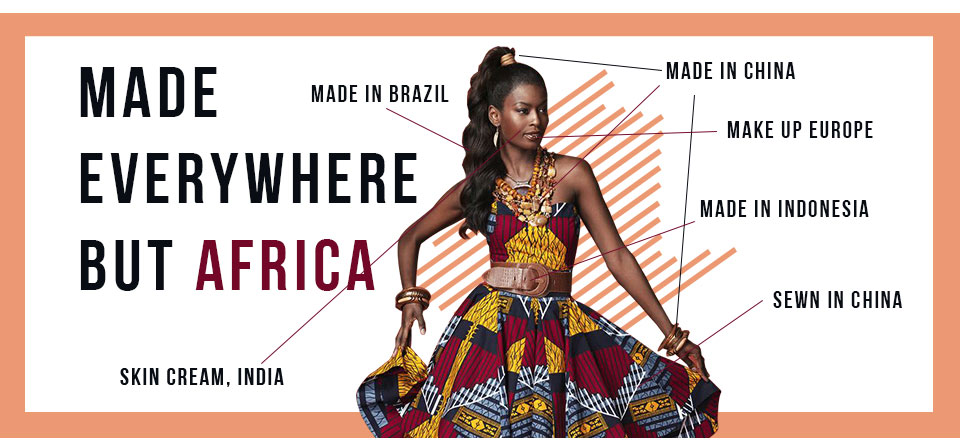
African belongs to everyone but Africans
Some people believe you need to be African conscious, or Pan-Africanist to wear African clothes. But being African is not a religion, it is not an Islamic Hijab where it is a symbol of your religious belief. Being African is what we are. If you have African hair you could be the biggest criminal on the planet, and you have a genetic right to have your hair natural. African clothes are the clothes created from the African cultural genius and are the default clothes of African people (smart, stupid, traitors, rich, poor, urban and suburban, advocates, Christian, Jews, born in Nigeria, or born in New York).
So only conscious people who know about Ancient Egypt and Black consciousness can wear Dashiki? So what is the reasoning for wearing European clothes as the default?
Now the second part, is that by wearing African clothes, even if for superficial reasons, it causes an inner transformation because you are connecting with your African soul. Far greater are the chances of becoming self-aware and acting accordingly if you dress as much as possible in African clothes. Plus you are creating wealth for the authentic African fashion industry globally and showcasing African culture to the world. Which is how powerful people display the politics of their identity.
FAILURE TO OWN
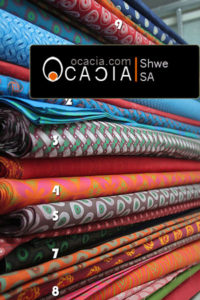
ShweShwe Fabric of SA
Long ago in the 60’s when Africans were starting to look for their true identity and wear authentic African clothes we had an opportunity to own what we wore and keep on going we did not do that. Actually we have never done that. We did not do it with jazz nor did we do it with dance. We create wonder styles like Break dance but let other people come and own them. African clothes is a dying industry — let us be very clear about that. I seriously doubt that post-Ocacia something else like us will come. Because the clothes are expensive to make, hard to make and the fabric is getting harder to source and the talent harder to find. People speak about indicators in the environment–like if all the top predators start dying how it affects everything. Well that is true for African economics. If we lose traditional clothing at this level, we will get to a point of no return. China is waiting for such a economic collapse to move in 100%
SHWESHWE SOUTH AFRICA
ShweShwe while a symbol of South Africa is not owned by African people, nor did it originate from African culture. We will use it because it is beautiful, we will use it because it does “represent” South
 Africa, we will use it because it is better than using something Chinese that creates nothing for us, not even a cleaning job. But we go into these things with no false illusions. On the BEE certificate for Da Gama textiles ownership states 40%, Black. But this was a Post-apartheid trick. Because Black does not mean African. Black is a political term that includes Chinese, Indians and others. It is what happens when you are confused about your own identity and allow others to control your identity. BEE is flawed since it does not differentiate between Indians and African giving a false impression that Africans actually have a larger market share than they really have.
Africa, we will use it because it is better than using something Chinese that creates nothing for us, not even a cleaning job. But we go into these things with no false illusions. On the BEE certificate for Da Gama textiles ownership states 40%, Black. But this was a Post-apartheid trick. Because Black does not mean African. Black is a political term that includes Chinese, Indians and others. It is what happens when you are confused about your own identity and allow others to control your identity. BEE is flawed since it does not differentiate between Indians and African giving a false impression that Africans actually have a larger market share than they really have.
BANGLADESH COMPARED

77% of Bangladesh’s total merchandise exports
Wikipedia: The textile and clothing industries provide a single source of growth in Bangladesh’s rapidly developing economy. Exports of textiles and garments are the principal source of foreign exchange earnings. By 2002 exports of textiles, clothing, and ready-made garments (RMG) accounted for 77% of Bangladesh’s total merchandise exports. By 2013, about 4 million people, mostly women, worked in Bangladesh’s $19 billion-a-year industry, export-oriented ready-made garment (RMG) industry. Bangladesh is second only to China, the world’s second-largest apparel exporter of western brands. Sixty percent of the export contracts of western brands are with European buyers and about forty percent with American buyers. Only 5% of textile factories are owned by foreign investors, with most of the production being controlled by Bengali investors. Now what about Africa? How many factories in South Africa are owned by African people? or even Lesotho?
BUSINESS OF FASHION
In a Video by “Business of Fashion’ (link below) they went through all the steps to create branding, how to work with CMT, pattern makers, sample makers, etc, how to get funding etc. But what they could not help us with is how to deal with RACISM and the challenges unique to the African. 90% of the steps they teach are irrelevant to Africans. For one we just do not have that infrastructure. There is no item of clothing that we make, that will be sold in any major retail outlet in AFRICA, because all (yes all) of them are controlled by Europeans (physically or otherwise) who have Zero value for African clothes, especially those owned by conscious Africans. Despite talking all day about a “rainbow” . Do the fashion schools in Joberg teach you about dealing with racism? They teach Africans how to try to fit into a Eurocentric racist fashion world by crossing their fingers and hoping someone will exploit them as the “Next Black thing”. Do the fashion shows that encourage African designers deal with the race factor, the blatant discrimination against clothes seen as cultural? No matter how perfect our clothes come out– they will not even consider them true fashion. for one African “traditional” clothes are not considered marketable, But then again that is true due to the fact that most of us have no interest in wearing them– so now we have a loop
Even on shows like project runway the elements of racism Eurocentrism are evident. Where remarks like “no one would want a big bottom” this is odd since large bottoms are the thing in African beauty aesthetic, and with all the butt implants going down to the tune of millions of dollars a year in America alone, I think we can safely say between J-Lo and Kim The butt has returned and crossover the cultural divide. So it is unclear which planet Michael Korrs is living on. the next thing anytime a non-White designer returns to their cultural aesthetic they are accused of being a costume. So only European aesthetic escapes costumy to be sophisticated and elegant, the rest of the world is a circus show.
INSTITUTIONALIZED
What Europeans have always mastered was the institutionalization of every aspect of their science and art. To study it, tear it apart, label it, standardize it and document it through time. Nothing even close to this has happened in Africa. And where it usually exists is when Europeans come and do so. But historically places like Ethiopia and Ancient Egypt have documented their arts and institutionalized it. And it is important in the development of anything science or art for it allows a study and expansion of the craft. We take for granted how much this goes on, we see words like Swiss Movement, Couture, these are regulated by governments in Europe. It allows the upper limits of high arts. In. Africa you cannot pick up one formal book that discusses Sheriba or zip zag embroidery in a formal way. So the art remains grassroots with no degrees of excellence. But look at China and Japan and even India at the volume of documentation around their arts and science. No great leaps are possible unless these things can be institutions
ADDING VALUE
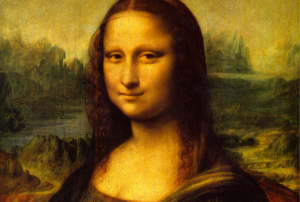
Mona Lisa– priceless
Do you know why this piece of art has so much value? It is certainly not anything special and many artist have done better work, more technical work and work I would rather hang on my wall. Yet it is priceless. And it is priceless because the race of people who claim it add value to it. They collectively repeat day and night stuff like “the best known, the most visited, the most written about, the most sung about, the most parodied work of art in the world” and as a result have added value to it.
No European is confused about the value of the Mona Lisa to European history and that is why after 500 years every generation has protected this earloom. Today the Mona Lisa sits protected for posterity behind bulletproof glass. What in Africa is 500 years old and so precious to all Africans? And this question hits at the heart of Europeans vs Africans and why our groups do not achieve the same. Unlike them we just do not have the same level of value on our culture, especially our Pan-African culture.
According to a report by Thomson Reuters, Muslim shoppers spent $266 billion on clothing and footwear in 2013 and are expected to spend $484 billion by 2019. Dolce & Gabbana got in there with some stunning work, the first “big name” Western brand to market designer Hijabs at the rich Muslim world (esp Gulf Arabs)

You cannot have a value for what you cannot understand. Ignorance has no value for anything. Try explaining the value of a house to an infant who cannot yet count. But values are placed on things by educated societies. No one is explaining to Italians the value of a Ferrari. Sure they know it is “expensive” but they know it is worth it. And this is very different from saying something is “too expensive”. I cannot afford a Philippe Patek Watch but I understand it’s value, I respect its value. Understanding the value of African craftsmanship is something some of us do not get. We are ignorant about the process, we are ignorant about our genius and thus have no value for it. These people are oriented to appreciate and appraise the value systems of others– but not their own.
TERRIBLE QUALITY
We were Googling African clothes vs Indian clothes looking at what was on offer. And I tell you (and I need to be honest) it is one big joke. Everything African looks the same. I mean you get your classic African designs which are always going to look good. But I find it is just downright awful and depressing the lack of creativity, the clash of colors, the horrendous presentation– my word. I think the idea is get a skirt and to make it African just make it from some African print!!!!!!!! Get the loudest colors with elephants and drums and make a dress with it and you have an African design. And you do get proper designers out there doing amazing things but how do you find them? Now go and search Indian clothes and see the huge quality difference! We have work to do.
FRIDAY IS AFRICAN CLOTHES DAY
So when you say to African governments “let us make every Friday African clothing day.” They lack the vision to make it so. They lack the courage to see it through. They are weak people. You say something Pan-African and they are looking for a nod from Europe to decide how to react. But can you imagine what such a simple thing would do to transform traditional clothing markets in Africa? Can you imagine what it would do for African pride, and self-worth, for Pan-Africanism and even beyond that for a true contribution to the diverse cultures of the world?
 Heritage day in SA today and it is interesting how the Zulu, Xhosa etc dress up in traditional clothes on this day– that is a good thing because it is beautiful. Now some of the Indians dress up in their cultural clothes. The poor so-called “colored” people have no cultural clothes to dress up in and the Whites dress how they dress everyday of the week. For Whites everyday is Heritage day! But one advantage European clothes have over African traditional clothes in South Africa is practicality. South African clothes are still evolving to be functional clothes for everyday wear. While in West Africa they have always been practical, more so than a suit and a tie in the Saharan heat for sure.
Heritage day in SA today and it is interesting how the Zulu, Xhosa etc dress up in traditional clothes on this day– that is a good thing because it is beautiful. Now some of the Indians dress up in their cultural clothes. The poor so-called “colored” people have no cultural clothes to dress up in and the Whites dress how they dress everyday of the week. For Whites everyday is Heritage day! But one advantage European clothes have over African traditional clothes in South Africa is practicality. South African clothes are still evolving to be functional clothes for everyday wear. While in West Africa they have always been practical, more so than a suit and a tie in the Saharan heat for sure.
AFRICAN TRADITIONAL DESIGNERS
The African design must design around restrictions. Unlike our European counterparts, we cannot think the sky of designing is the limit. These guys in Europe go and get their fabric designed just for them for one range. Like where can we do that. We wait for the scraps China and Europe do not want and sling something together. It is not an industry that exist for us. We make those Zig Zag sewing machines perform all those tricks–they were not designed to do that. But we made a plan. Ocacia wants to start changing that but to do it we need to make African clothes significant in economic terms where it has the power to make a demand on the global world.
PUSHING PERFECTION-THE INSTITUTION
Has anyone here watched Masterchef? If you have you already know where we are going. You see Europe has established for over 400 years standards by institutionalizing what they do. They did not rule the world by brute force alone. Look at the standards and how the secure them on Master Chef. But in Africa I fear we do not really get it. You see when you start talking about standards of excellence and becoming more than a continent of beggars people think you are the bad person.And this is how Europeans established their institutions may it be in cuisine, tennis, fencing, law, on and on.
In Africa fashion is largely informal. There are no bodies which govern over standard. There are no websites which give accreditation for embroidery work. No regulations, no master and grandmaster. It is largely undocumented.
EMBROIDERY
The machines are not the same, the approach is not the same, the technique is very different. And embroidery like painting or playing guitar requires more natural talent. If you do not have it — you will never be a master
Embroidery is like a fingerprint, it is unique to the artist. We can look at any embroidery work and tell you who did it. Each person has a style and many have a speciality, something they do very very well. Some are ultra-clean, some are rustic, some are masters of sheriba, some are masters of geometric shapes.
SHERIBA
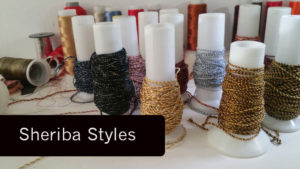
Sheriba rope: Used in African embroidery
Sheriba: You probably only hear us talking about it. Yet we certainly did not invent it. But what you will find is Africans have all kinds of stuff going on, but we rarely have the ability to name things and impose those things we create/
use on the world beyond our little villages. So if you were researching Africa you will find not even 80% of the available info about our rich history and traditions. And historically it has been a problem for us because we do not place enough value in what we do. We recognize this issue and deal with it by institutionalizing everything we do.
TYPES OF EMBROIDERY
In West Africa there are various styles of embroidery. Some are called carpet, rice, bars, flowers, to describe the different techniques which constitute a design.
MADE IN AFRICA
Some of us see an African persons name on a company (Uncle Ben, Aunt Jemima, or in Africa PheZulu lodge or Umhalanga Resort). Or we see P-Diddy flashing a bottle of Cîroc [3], or some record label with a rapper fronting it. But that is the front end, who owns the company? Who owns the shares? Who is the Real CEO? Did we check that? Just because Rihanna is on the perfume bottle does not mean Rihanna owns a perfume company .
House of Marley is yet another example of a “partnership” where HoMedics (a Spa company) is really licensing the Marley name. So we see a new range of cool Marley branded speakers and say “WOW, Bob would be proud.” But then we needed to know what African scientist is behind all these new Marley products? What African genius creates any aspect of that brand? Turns out none; It is a White company licensing their name and giving them a cut. African people are happy, delighted even, to front. They care nothing for ownership of the entire process of production as long as their faces are plastered on the front cover of the brand, leaving the real headache of counting profits to Europeans and others.
Most of those so-called Black record labels (like Codeblack) are subs of majors and the fronters get paid a salary. We need to know this because a lot of the time we have pride in businesses we do not own. And because people are satisfied by emotional reactionary “feel good” they get pride in fronters more than real CEO who may be behind the scene. For many it is only what you can see, and hence this exploitation is enough.4)https://www.africanholocaust.net/business.html#ownit
Slavery to Chinese was inevitable the second most abandoned Nkrumah’s vision of industrialization and depency become the modus operandi for the entire continent.
DESIGNED IN EUROPE FOR AFRICA
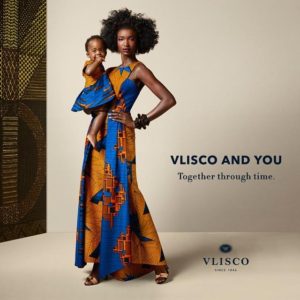
Made in Europe for Africans
They don’t only copy our designs they copy the trademark and logo and label. Almost every design we make has been copied–Kofi Boateng
1846 Vlisco fabrics created a unique Real Dutch Wax fabrics in Holland that have influenced the African fashion landscape. Another way of putting it is that Vlisco is part of the colonial and neo-colonial era which is instrumental in exploiting the African continent. Taking African prints manufacturing it in Europe and selling it back to Africa and the rest of the world at a premium price. And the Chinese seeing their example have now mastered this. They design prints, like Vlisco, on their own that the think represent Africa and flood the African market destroying local African owned companies. 5)http://www.independent.co.uk/news/business/news/ghana-s-textile-trade-unravels-due-to-cheap-chinese-imports-a6787761.html
Ghana’s markets have flooded with cheap imports, arriving mainly from China in the last decade and under 3,000 jobs now remain in an industry which employed more than ten times that in the 1980s.
Located in Tema, GTP is one of only four factories still operating. Renowned for its traditional designs and wax printed fabrics, the company has seen production levels drop 30 per cent and its production unit half since 2005. Mr Eshun is among 650 factory staff remaining.
The firm’s managing director Kofi Boateng says the impact of cheaper fake goods has been huge. “We started to see that there was a lot of smuggled goods coming from the Far East copying our designs and being smuggled into the country,” he explains.
“They don’t only copy our designs they copy the trademark and logo and label. Almost every design we make has been copied.”
Togo and Ivory Coast are often the entry point for smugglers, with some Ghanaian market traders even travelling to China to collect designs.
As people in African fashion we stay well clear of anything called the “Fashion world” we have ZERO interest in it from the POV of a business. We might watch it and learn from it but we do not expose our work to its corruption and illusions. Because it is not much better than wrestling. Contrived, choreographed, fake, artificial, superficial and pretentious. And this is a message to new designers out there. It is very unfortunate if you have to try to enter this fabricated world of fashion. Because what we should have created as Africans is our own center of self-appraisal with zero need to benchmark the cancer that represents Western fashion. You see here in Durban they have something they call a “Fashion week” NO ONE from the African fashion world engages it. Not one of us bother with it. It has nothing to do with our African politics, worldview or culture — Ocacia
As important as it is for us Africans to own our own fabric, our situation right now is so dire that even worrying about fabric is not a priority. Unless we are trying to save an existing fabric production business owned by Africans. A lot of “smart” people like to complain about “But the fabric comes from China”, but why not continue that and complain that the sewing machines also come from China, the chalk comes from China, the thread, the plug points even come from China? More important than fabric is the fact that right now maybe 80% of “African” clothes come from China. Clothes are a final product. So how do you worry about a dirty rug in your house when the entire house is burning down. Where does FABRIC come into it when 80% of your clothes you do not even make!!!!!!!!!! After we control 90% of our market then I think we can worry about fabric, after fabric we maybe be able to worry about thread and sewing machines.
BUT WHO OWNS IT?

misleading because does not deal with true empowerment which can only come from ownership, who owns the profits.
There is a big con game seen around the word. Read the text in this image, it looks good doesn’t it? No, do not take our word for it. Pause and go and read it. Ok now ask yourself a critical question what did they leave off? They spoke about Job creation (check), they talked about empowering women (check) feeding hungry Africans (check), they spoke about community upliftment (check, but what does that mean? in South Africa). Now let me tell you guys what they did not talk about, and it is why we keep getting fooled. They never spoke about OWNERSHIP. Because in this long long list, the company is still 100% owned by people from Europe using Africans as workers and defining empowerment for us. If we do not own it, throw everything else in the bin.
FABRIC INDUSTRY CRISIS
The textile industry in Ghana was once a very booming industry, which once employed about 25000 workers. Most of these companies produced high quality materials, designs and very good textile brands, which sold, so well on the local market as well as other markets in the West African sub- region. Wax prints produced by these companies were in high demand on the Ghanaian market because they are use in making traditional apparels like the Kaba and other exquisite wears. The Industry was not only a source of employment to many Ghanaians but also contributed significantly to the country’s Gross Domestic Product, (GDP).
In recent times the industry has gone through some difficult times resulting in shutting down of production lines of most of the companies in the industry. A lot of

Authentic African Fabric
workers had been made redundant as a result of these shut downs. Ghana Textile Print, (GTP) which once produced a very good textile brand the GTP brand is reported to have shut down its spinning and weaving departments and laid off many of its workers. This was a company, which was known to have competed with multinational textile companies in the past. The story is not different for Ghana Textile Manufacturing Company limited (GTMC). GMTC shut down its production line way back in December 2005.
Even in South Africa most fabric plants have closed down. Durban was once the hub of denim is now quite due to the Chinese boom supported by the ANC ruling party. But unlike Ghana next to none of these industries are in the hands of African people. But still locally made, even by Europeans and Indians, is better than made in China by Chinese workers and Chinese bosses.
POORLY DEVELOPED INDUSTRY
Authentic African fashion industry is one sad state. You Google African fashion or see it on Pinterest and very little you see can be purchased, most only have
a Facebook page or at at best a tiny spot on someone else’s trading site (like Etsy ). Now go and do the same for Indian clothes and see the difference. And what about quality? Most African shirts cost upward of $60 US dollars. And for something handmade this is not actually a lot, if the item is made properly. The image on the right is an example of a shirt which sells for $70, it is not a designer brand, it is not made properly, it is not linen. But yet it cost only $10 l
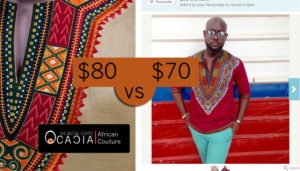
High Quality vs Low Quality
ess than an Ocacia original. So how does the industry compete if someone must pay $70 for a basic cotton shirt with some fabric glued together with the raw edges exposed? High prices for Western clothes may be ridiculous but there is certainly no issue regarding quality, even at $40 USD. But many African clothes are flea market standards aka bush quality (Tanzania), West Walk (South Africa).
So the challenges to the industry are
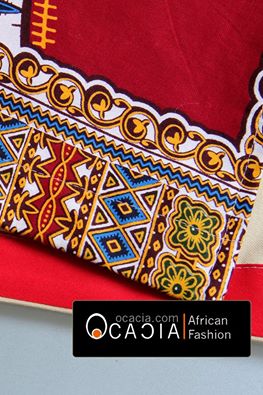
Ocacia Premium Quality
two-fold. A poor product and poor support
and the two are often integrated as consumers assume anything made in Africa will be sub-standard (just like Nollywood films) but the primary issue for non-support is lack of value for African culture due to mental enslavement and self-hate.
SUBSTANDARD LOOP
One reason why African goods are inferior in general compared to their global counterparts is due to lack of support by African communities. A visit to any African market from Durban to Dublin in Ireland is filled with low quality African attire. But you will find many low quality products in such places. But as you will find low quality flea market quality of almost every nation, you will also find a premium level version on the high streets in exclusive boutiques. in Durban some really substandard African clothes selling for R250 (divide by 12 for US), the clothes are horrible. But people do not want to spend, so how can they offer premium clothes for R250? They cannot. How can they spend all day clean work and attention to intricate detail ? They cannot. We spoke to one embroidery guy about his messy work, and he said he has to do embroidery in 30 minutes per shirt to just break even. People do not want to pay for quality so he cannot afford to do it. do not want to support. It creates a circle. There is no incentive for people to do higher quality work and use premium fabrics if there is no value for the work. Alternatively Chinese and Indian fake African shirts are now selling for R150. You can start to see where the real problem lies– in lack of support. Hence the industry dies, and as it dies quality goes down. We get really offended when people complain about our prices. We ask– have you seen the clothes, do you know what a linen top (anywhere by anyone) cost? Our prices are way below what they are worth. Had we made these clothes back in the UK or Italy the prices would have to double for us to keep the lights on.
INSTITUTIONS
Our Italian, French and Indian contemporaries were born into a world where their benchmarks were already established. And for generations upon generations they built on these traditions. The Japanese have been building upon centuries of craftsmanship. We do not have that in Africa. And this does not mean we do not have skilled musicians, artist and tailors. We do, but we do not have institutions like they do. In India you can find massive academies teaching Indian dance and embroidery as formal subjects. I struggle to think of one formal structured academy for African embroidery anywhere in Africa. This has profound implications for our development.
DYING INDUSTRY
It is very sad to see people pulling out of the African fashion industry. And worse when you see them becoming successful for doing so. A friend of ours started in African fashion and was just surviving for 6 years (paying rent, using public transport, feeding children). The minute he switched to another area of fashion he is now very successful (bought a car for business and one personal one, opened a new shop, exponential expansion in 2 years) totally transformed. Another top African designer told us straight he is looking at creating a label with a European name and focusing on high street clothing. He said he just does not see a future in African anything. No negative remarks can be thrown at these people– only at the people who through lack of support make sure African fashion dies.
MADE IN …
When you say Made in Italy– it has value. When you say made in Milan– It has value. When you say Swiss movement — it has value. When you say made in Japan– again it has value. Now this value is real. It did not fall out of the sky and bestow itself on these nations. Germany put in the mad hours to make German and engineering synonymous with quality. And we in Africa must do the same. NO! The world does not owe us any favors and the only way to make Made in Africa interchangeable with excellence is to ditch the excuses and make it so. Now how do we do that? None of the above got great in a vacuum of non-support.
TRADE BARRIERS
If you want to filter a certain “type” of person it is very easy. No one needs to say “Only rich people apply”. or “No Africans” they just set up criteria that based on deep research is going to filter you out. They are doing this on Amazon with films. For example when you want to submit your film to Amazon/iTunes or some film festivals and TV stations they just have a criteria so high, only big studios can afford to meet those requirements. Like Your film must be encoded in 5.1 or have closed caption in this and that format. They just got rid of 99% of things made in Africa. Now I am not going to knock the need for a certain quality, all I am saying it is a system that filters out certain content instantly. They do this in fashion, and especially in commodity trade. The African continent struggles to meet the international quality standards and hence is barred from competing in the global market. Naturally we get to impose no such standards on the junk they dump on our local markets.
If you do not have the capital you can have the best ideas in the world you are going nowhere. You cannot open up certain accounts you cannot ship fabric to America without a special document, you need an export license on and on. How can a small person get all of that? There is a customs declaration form where you have to practically list the fabric content, thread count, have all kinds of paperwork and be associated with all sorts of trade this and that to be able to trade clothes abroad. To take money for clothes you need an online shop, but how expensive is that, and to process payment you need insurance, and all manner of legal clearance. So for a talented tailor without that “Western” education there is no way in hell they will be trading online, unless under Etsy or the like. And they are chopping a good percentage on every sale, making low quality clothes expensive.
POOR SUPPORT
Somethings will never exist for African people unless we create markets for them. Designer Traditional African clothing would never ever exist unless people wanted them. It sounds obvious? But it is a point that has to be made. And when we look around the Globe African people are often forced to have to wear the clothes of others, eat the food of others, nothing really exist for us. In SA, despite the majority being African, you struggle to find any major African restaurants. It is not considered a viable market to invest in. Despite the 100s of shopping malls in SA you will struggle to find a designer African clothing shops–despite 80% of the people being African. Yet in the UK you can find designer Muslim clothing shops–because a market exist. Next to no one is sitting down saying Let us make a car just for African people to use. But In India they are doing it. Because Africans fail to be a market worthy the investment. And that is because of two factors 1. identity crisis 2. Failure to support.

Rich and Poor Italians are proud of Ferrari
WHY PREMIUM IS CRITICAL
Someone on social media asked “why is Ocacia making such expensive clothes that are are beyond the reach of the average slum dweller”
Ocacia is a premium designer clothing company– that is what it says on the site. Just like in Europe no one ask why doesn’t Ferrari, or Channel, or Versace make clothes for minimum wage earners. Or why doesn’t the prestigious watchmakers of Switzerland do budget watches for the impoverished in Europe. It is a n extremely stupid question to be frank. Because why is there an expectancy on something African to cater to the image of Africa created by the West? Is every African poor and hungry? So by that extension should ever single last African business cater to the poor hungry and destitute? Is that the only Africa in existence? What does the question say about our mindset and attitude of self. If every continent in the world knows that a market has different economic brackets why would business not exist to cater for the successful elements in Africa? Or should the successful African have to turn to Italian designers to get clothes since clearly you do not expect them to wear $10 shirts to the office. Lastly the market is in the hands of the other because a. we have no value for our craft and expect it to be cheap. b. we do not support any aspect of our industries. Low or high end.
 But premium is critical to the growth of any industry. Almost every industry is top down, the most beautiful artwork of any country is expensive. The most beautiful African mask take time, and as a result cost. You see when the only products Africa produces for local consumption are low end, it has a kick back to the quality of craftsmanship available in Africa. If there is no incentive for high end African products and everyone is just trying to turn over cents, then the industry’s creativity dies. Now comes Ocacia and our dedication to quality, all of a sudden we can pay more and artist can spend more time mastering their craft. An embroidery artist can spend ALL DAY on a job without worrying about pushing 10 low end shirts. But without the premium products, there will be no premium craftsman. Then Africa will lose its market share forever. In addition to that China has no interest (yet) in moving into the premium African market. So premium clothes are the last remote sanctuary for African clothes. The processes involved in making premium clothes are not practical to China. So it allows African to hold on to what is left of their craft.
But premium is critical to the growth of any industry. Almost every industry is top down, the most beautiful artwork of any country is expensive. The most beautiful African mask take time, and as a result cost. You see when the only products Africa produces for local consumption are low end, it has a kick back to the quality of craftsmanship available in Africa. If there is no incentive for high end African products and everyone is just trying to turn over cents, then the industry’s creativity dies. Now comes Ocacia and our dedication to quality, all of a sudden we can pay more and artist can spend more time mastering their craft. An embroidery artist can spend ALL DAY on a job without worrying about pushing 10 low end shirts. But without the premium products, there will be no premium craftsman. Then Africa will lose its market share forever. In addition to that China has no interest (yet) in moving into the premium African market. So premium clothes are the last remote sanctuary for African clothes. The processes involved in making premium clothes are not practical to China. So it allows African to hold on to what is left of their craft.
Budget clothes made in bulk by Africans have no chance of beating China because the Chinese make the machines, make the yarn, on and on.
Europeans and Japanese are masters of this. There is nothing for consumption today in Europe or Japan that is not available in a high quality format. European (including American Europeans) did not get to technological greats by producing low quality products with the poorest in mind–no technology, no art does that. Not even in Ancient Egypt. Books in Timbuktu were not something the poor had in more abundance than the rich. Do you know how much these speakers cost? They are some of the best in the world. KEF, a British company, said it is obsessed with high quality and aesthetic. They are very different from the cheap Chinese speakers going for $10 bucks. And KEF makes speakers for those who can discern between $10 and $10,000. That is clearly not for everyone. But premium anything has a price. And when Europeans want to showcase the best of their best, it is those that push the boundaries of excellence that define their group. The same with Japan. What exactly defines the best of African premium couture? If no one is bold enough to make premium clothes to push the boundaries of African excellence? Did Italian cars become what they are with a target of substandard and budget?
a high quality format. European (including American Europeans) did not get to technological greats by producing low quality products with the poorest in mind–no technology, no art does that. Not even in Ancient Egypt. Books in Timbuktu were not something the poor had in more abundance than the rich. Do you know how much these speakers cost? They are some of the best in the world. KEF, a British company, said it is obsessed with high quality and aesthetic. They are very different from the cheap Chinese speakers going for $10 bucks. And KEF makes speakers for those who can discern between $10 and $10,000. That is clearly not for everyone. But premium anything has a price. And when Europeans want to showcase the best of their best, it is those that push the boundaries of excellence that define their group. The same with Japan. What exactly defines the best of African premium couture? If no one is bold enough to make premium clothes to push the boundaries of African excellence? Did Italian cars become what they are with a target of substandard and budget?
And everything is top down. So the work of the tech giants like Samsung with their premium phones trickle down to the budget phones. It never happens in the reverse direction–it cannot happen in the reverse direction. And African fashion is the same. Almost every beautiful design you see was created at a premium level, others see this and make the cheap versions. Luxury watches innovation pave the way for budget watches designs. Both aspects of an industry are valid, both are necessary as not everyone can afford $10,000 speakers. But if there is no one to buy the expensive then art and innovation become dead.
It is not the duty of every business with the word “African” in it to cater for the impoverished: That image sold to us as our default state. There is a huge middle and upper class in Africa that has the money to spend on premium clothes. Premium clothes showcase the best of African creativity and quality.
QUARTZ VS MECHANICAL EXAMPLE
Since the 1970s, quartz watches have taken over most of the watch market, and mechanical watches are now mostly a high-end product, purchased for aesthetic reasons, appreciation of their fine craftsmanship. There is no doubt that all watches are pretty good at telling the time, but then why pay premium for dated technology when quartz can do the exact same thing (and better in this example that the mechanical movement)? But mechanical watches have an intagible appeal because of the craftsmanship involved. The person buying is purchasing the spirit of the craftsman and not some digitial circuit with a battery. 6)Lynch, Annette; Strauss, Mitchell (2007). Changing Fashion: A Critical Introduction to Trend Analysis and Cultural Meaning. Berg. pp. 148–149. ISBN 1845203909.Although from one point of view it makes no difference as far as time goes, the entire mechanical market is supported because people have added value to the craftsmanship.
WHITE VERSIONS OF AFRICA
In Durban there is a Durban Fashion Fair, where all the designers meet and showcase their stuff to the world. But Durban Fashion Fair is yet another White event hosted on African soil with African governments paying the bill and giving awards to White designers and African designers trying to be “Black”versions of Calvin Klein.
You see it is called the Durban Fashion fair, not the African fashion fair. And while I am sure people of African heritage will be attending and trying to showcase their stuff to the world, it is not an African event. i.e. not an event interested in anything rooted in African culture, just like the
Durban Film festival. You see the people behind it have a different objective to us. Africa for them is the fringe, something they want to touch, but escape. They want to be Paris and Milan, while the rest of us want to be African.
An interesting behind the scenes example of White racism in South Africa’s fashion industry is Shante Gumede aka Shante G who refuses to model African clothes because her white agency said it would damage her career. What career is there to damage when she has failed to land any success in the modelling industry because the same White owned modelling agency prefers European models. Her career is at a total stall but she has faith in her White agency because African people are so mentally damaged they would trust Europeans over Africans, despite it bringing them no longer term advantage. Self-hate and fear of African cultures drives Black models to shun their own, thinking that being seen as African or around things proudly African that it will causes their White associates to look down on them. And like so many in the fashion or film industry they are desperate to escape any and all associations that whites may dislike.
One of Durban’s best African designers, Ismail Mtumwa 7)Ismail owns Wantashi, a premier designer shop in the heart of Durbanbased in Durban from Congo is one of the most creative talents in African fashion in the world. Yes in the world, but how come we do not know his name? How many awards has he won at the Durban Fashion fair? How many times have they interviewed him or hired him to mentor young upcoming African designers? What about Ocacia, one of the only premium online African designer companies in the world. With a state of the art website. Surely they
can teach young African designers a thing or two. How many times have they been invited to Durban fashion fair? On their website this is what is stated:
-
- Develop and bridge the gap between young and established designers.
-
- Create an enabling environment and provide platforms for designers to showcase their product.
-
- Capacitate the textile and fashion industry .
-
- Position Durban as the fashion developmental capital
-
- Create employment opportunities and contribute toward the City’s economic growth.
- Promote Durban’s emerging and established designers.8)http://www.durbanfashionfair.com/about-us/
But Ocacia has confirmed they have emailed them over 10 times when they were starting for advice, collaboration, and support and got rude emails or just ignored by “Black” people who are employed to “
We aim to re-establish the fashion industry, create employment opportunities and position Durban as an international fashion capital.”
Yet Ocacia is offering jobs to young African designers and models and cannot get an email response from a government funded event which claims to be about empowerment of young African citizens. But maybe it is not “South African enough” and too Pan-African.

Celebrated icons of SA Fashion
When Huff editor Julee Wilson did a feature on South African fashion she got as many Europeans included with two footnotes to African labels. Thula Sindi and David Tlale (the poster boy for everything we are complaining about). This is Eurocentric African fashion exposed. 9)http://www.huffingtonpost.com/entry/7-south-african-fashion-brands_us_55ae6e04e4b07af29d5669ff
And we need to be blunt and honest about what this is all about. The White world of fashion, despite the individual color of its signatories and agents is a Eurocentric project which supports European culture in Africa. Davil Tlale, hardly the most talented in South Africa by any standard, fits the image of a gay fashion designer that characterize fashion in Europe. While, Julee Wilson grew up in Harlem and certainly should be sensative to the race issues of this world, her

David Tlale, the black version of European Fashion
article promotes majority white designers in a country rooted in its legacy of apartheid. This is why we need to discuss this issue in detail. Almost never is African fashion, the authentic African fashion that stands independent of Whiteness. And it is almost never mentioned how much places like South Africa, with no deep history of cloth making take from the rest of Africa. None of Tlale’s best designs stand on their own as South African inventions, it is allow taken from West Africa and East Africa. And while he has every right to do so as an African, the media gives the impression that he is a genius in isolation. And SA is amazingly good at creating icons and celebrities to get its name on the world stage. Even his website is second rate, and it is odd that for all the international accolades he has a horrendous website. 10)http://www.davidtlale.com/content/6-the-brand

A plain dress found on every street corner

Worthy Designs by Tlale
Understand we do not live in a world structured on Merit. And it makes no difference how good you are, how well you do what you do IF you not making money for White Supremacy. And this is why you might see African designer, African filmmakers all over the world doing good stuff, but they always have to be making someone white richer for their names to be know 8/10. Pick a name we know and see. For every $1 Rihanna makes, and she is making a lot of dollars, how much richer is she making the White World that supports and promotes her? Pick an actor, Will Smith– samething. As the Late Prince said –you are a genius according to the papers when your music is making them money. That same amazing music is not even notable when you cut ties and go independent. Had our films been BBC funded, or PBS owned they would be global standards and we would be on CNN Africa. And b/c we are mentally enslaved most of us need their verification before we know which one of our people is a genius.
DEALING WITH IGNORANCE

Textile industry in Lesotho
Someone wrote: l will only support Made in Africa if it’s manufactured by us. By that I mean we cut down the trees, pick the cotton, etc, twist it until it becomes cloth, and sew it with our sewing machines that we created and manufactured, or either with our bare hands. If we have to buy the material from others, I’m not down.–Jomo Kinsey (on Facebook)
Mental slavery is not only the fool that will tell you “I don’t spend my money with Africans” It is also people like this. And you must understand why they are the same. You see we look at something called output. The output is identical. The fool who puts an impossible criteria on us unifying, or us trading, or us beating White supremacy is identical to the person who plain out will not support. B/c all the person who wrote that comment is saying is they will never buy anything “Made by us”, so what are they wearing right now? What are they eating right now? What are they driving right now? What TV and computer are they watching right now? You see they have a criteria for supporting Africa (which is impossible) but they have no criteria when it comes to supporting White business and Asian business. They just spend their money. Only “Black” business, to get their support, must be 100% only African. So if Japanese were thinking like this how would they have created Sony? I mean even Apple an all American company has to import components. It actually makes no components. All come from Samsung and other tech giants. That is the world– that is globalization. I think considering we not even in the running, owning something (rather than nothing) might be a real big deal.
As we try to establish a market we have to educate our people that “African clothes” is like saying Cars or watches. They are certainly not all equal. Designer clothes and run of the mill market clothes are as different as a Mickey Mouse Watch and a Philippe Patek.. Sometimes when people speak of African clothes we sense there is this attitude that “oh let me go and get some from anywhere” African clothes are all the same. “When I go to Africa (that big continent), I will get some African clothes”. Yet everyone is aware of the difference between a bargain basement poly suit and an Italian Suit made with lama hair from the Andes. Adding value to the African market is very important to us.
And in making African clothes we have to recognize we live in a highly globalized world, and we are not afraid of that global world. We are not afraid to take fabric from India or Dubai or even Japan and make African clothes. And we must also remember this was something that always happened in the most dynamic parts of Africa (Ethiopia, Swahili coast, West Africa and Ancient Egypt) the collision of cultures to create a richer culture. (photos of an African top made from beautiful Japanese linen)
TOO EXPENSIVE

 A common response from people who hate their culture is to come out sideways and claim our clothes are expensive. So let us walk with them for a while. And there are two approaches. 1 quiz them about our clothes and the quality and time it takes to make them? Ask them how much they think someone should be paid for 5 hours of work on premium linen fabric? The other approach is to ask them what price the clothes SHOULD COST, since our prices are too high. They might tell you a number. Then offer them the clothes at that price and see what happens next. We are not fooled by the excuses, we been in this business long enough to know. You buy anything tailor made in the UK -even a basic cotton shirt, you are in the $150 price point. Let us not even talk about Linen with complex embroidery being sent 4000 KM from Africa. There is no quality African store even in Africa selling anything for less than $50 bucks, designer African clothes in South Africa are easily $70 bucks and up (and still not at our quality level). And you have to come to SA and collect them.
A common response from people who hate their culture is to come out sideways and claim our clothes are expensive. So let us walk with them for a while. And there are two approaches. 1 quiz them about our clothes and the quality and time it takes to make them? Ask them how much they think someone should be paid for 5 hours of work on premium linen fabric? The other approach is to ask them what price the clothes SHOULD COST, since our prices are too high. They might tell you a number. Then offer them the clothes at that price and see what happens next. We are not fooled by the excuses, we been in this business long enough to know. You buy anything tailor made in the UK -even a basic cotton shirt, you are in the $150 price point. Let us not even talk about Linen with complex embroidery being sent 4000 KM from Africa. There is no quality African store even in Africa selling anything for less than $50 bucks, designer African clothes in South Africa are easily $70 bucks and up (and still not at our quality level). And you have to come to SA and collect them.
BRAINWASHING FASHION CON

Givenchy Tee for $450 US
So you hear people use the word expensive when it comes the tailor made African clothes that take 7 hours to make. For example like our Tabaski top. So

$350 for a Markus Lupfer Tee with a Bunny
what do you think of this Givenchy shirt. It takes 8 minutes to make in probably Bangladesh and cost $500 Bucks. But Black rappers will rush to wear it to be part of the crowd. The other Tee is by Markus Lupfer and cost $350 Yes seriously. This guy is a big name in design for doing a Bunny T-shirt for $350. Let me tell you guys a secret. The biggest con industry in the world is designer fashion. More than Hollywood, more than music (singles and albums), more than banking and paper money. HYPE is the only thing that floats it. Compare all these mass manufacture clothes to our Tabaski top which cost $180 and takes 7 hours and 3 people to make. But they say we are expensive.
OWNING CULTURE

Chinese supply most of Africa with fabric
Despite the fact that everyone else is profiting from our culture one joker told us culture should be free. Well it seems to be free because we give it away to Chinese, Arabs, Turks, and especially Europeans. We have all kinds of basket crafts in Africa and we own next to none of it. We have beautiful African clothes and we are so stupid we let China take over our hold industry, design the fabric and sell it black to us. Do you blame them? After all culture is free, so they freely take it and profit from it. Things are free in the minds of children and some of us are stuck on 4 years old.
RUNNING BEFORE YOU CAN WALK
STAGES 1: The most basic stage of development is that people can get money to live. There is nothing below this. So creating jobs are very important.
STAGE 2: Making sure people are employed in good positions to earn a good salary to have a good lifestyle.
STAGE 3: Making sure people have an equitable share of the profits from their labor.
STAGE 4: Making sure people are owners of specific industries, like owning a design studio, an accounting firm, a tourist agency.

Exploitive Cobalt mining
STAGE 5: Making sure as many aspects of an industry and its dependencies (like fabric manufacture, cotton fields, legal services, accounting, as much as possible) are all owned by the people. But very few countries in a globalized world are an industrial island. certainly not even Europe. But maybe China, but then where do they get their fossil fuels or Cobalt from to put in their phones?
So online couture companies like Ocacia are not common. We are not at stage 5 if we barely made it to stage 4. No nation jumps these steps. No people become masters of industry without working their way up the ladder. And only support creates a greater economic ownership footprint in Africa.
As an industry struggles to emerge, and with barely anything in existence compared to other cultures, it is extremely silly to expect African fashion to be so economically stable to start manufacturing sewing machines. And we need to ask if Africa is losing it’s fabric industry to China, due to low demand and the forces of globalization, how is the African industry going to support an expensive plant that to manufacture complex industrial sewing machines? If Europe and America–Industrial Giants are buying from China and cannot compete what about Africa? Making 0.0001% (guess to illustrate a point) of the total global output of clothing per annum.
POOREST CONTINENT
In 2014, a handful of East African countries imported more than $300 million worth of secondhand clothing from the United States and other wealthy countries. The used items have created a robust market in East Africa and thereby a decent amount of jobs. But experts say the vast amount of these imports have devastated local clothing industries and led the region to rely far too heavily on the West.11)East African Do not want Used clothes anymore

Horse race of Nations and People
Can Africa escape the loop of poverty? Well it will be very hard because we must understand if this is a race, China and America are almost at the finish line. India is in their for years, Turkey is in their, South America is in there, UK is holding strong but Africa is still in bed. And while you might hear of growth in African economies and all the optimism by speakers like Ngozi Okonjo-Iweala on TED, it is all rhetoric and illusions because those people never deal with OWNERSHIP. They speak of national growth and rising min wages to gauge Africa’s progress. We are measuring ownership and exports of final goods on a globalized market– it really is not the same standard. So a factory in Ethiopia or the factory that makes jeans in Lesotho, or the entire fabric industry in South Africa– Sure they are in “Africa” but not one single African owns them. You see the Proudly South African shweshwe we use? it is owned by Indians and mainly Europeans–no aspect of that fabric is owned by native Africans (not a cent), the rest of the Shweshwe is made by Chinese. We are not even in the race.
THE LOOP
THE CRISIS
There is a serious crisis coming in the future for African fashion globally but esp here

Influx of Chinese fabric destroys local industries
in South Africa. We cannot ignore the signs, and have to pray we all can survive it. The Rand is a mess. Now this actually benefits us (right now) because we sell clothes in US dollars. We bank in British and US currencies–not Rand. It means we buy with US dollars in a poor performing Rand economy. Our money goes far locally. But eventually the stores cannot afford to bring in parts, or fabric. regardless of if we can afford it–they will not be able to afford it. And what affects one–affects all. Already many stores have closed down. Prices are flying up. Embroidery rayon use to be R10 now it is R25 and you cannot even get the colors (Purple, Chocolate brown, etc) we have to even import silly things like pins and other haberdasheries . The fabric we use to call “economy linen” is not more expensive than the premium linen. (go figure). A storm is coming. And We might need some Darwinism to get out of this one. Some hardcore evolution. This is why we are mixing up our designs and fabrics. Before it was only linen now we are using everything.
POOR WORK ETHICS
Africans are not only poor as a group because of external forces. There is also a serious problem internally. The concept of hard work might be familiar to some, but working smart is not that popular. So the continent remains un-educated (where education is a holistic understanding of how the world works and our role in it). Working smart means working together, working together means being able to increase the African bargaining power. But in the African fashion industry that sophisticated level of working together does not exist at a level to challenge the global obstacles in our way.
Considering how tight things are economically and how many Africans are struggling to make ends meet we find it surprising to hear tailors tell us how slow and quiet business is, yet when offered the opportunity to earn a much needed income they seem all of a sudden to be so financially secure they not that serious. One was supposed to come on Sunday at 8, then it was 10, then it was 12– he never showed he never called. Last call to him he said “I am on the way”, But this is the same people who complain about how tough life is. And this is our experience continent wide. And it is no surprise we also have the poorest continent economically despite all the wealth and talent. And it is not only laziness and poor attitude to work, it is also stupidity (to be blunt). Low educated people who make very poor choices. In the above example the tailor from Malawi planned to come, but decided to go in a bar and drink one beer on the way to our offices. He never made it out. He is not only out of a job for that day, he is out of ever being called back since it happened about 4 times now. He is not dependable, hence no business can create a solid foundation on anything as fickle as poor workers.
AFRICAN ALTERNATIVE?
Low wages, cheap power and a stable political situation have prompted foreign textile companies like H&M to start sourcing from Ethiop

Ethiopian Textile industry
ia. The country has a huge workforce and would like to become the next international textile hub. But the workers themselves are struggling to make ends meet.12)http://www.dw.com/en/low-wages-draw-international-textile-companies-to-ethiopia/a-18877027
Sewing machines rattle away in the huge GG Super Garment factory in Debre Zeyit, some 45 kilometers (28 miles) southeast of the Ethiopian capital, Addis Ababa. Hundreds of women and a few men are sewing singlets and T-shirts, destined for the Swedish company H&M.
As a result of rising salaries and growing labor unrest in Asia, an increasing number of foreign companies have started moving their production to Ethiopia. According to factory manager Joseph Elisso, the conditions in the East African country are far more favorable.

Chinese Factories in Ethiopia
“Ethiopia is stable and peaceful, electrical power is cheap and labor costs are very low,” he explains.
Entry-level salaries for workers in Ethiopia’s textile industry range from $35 to $40 (32 to 37 euros) per month – lower than Bangladesh’s minimum wage of $68 per month and far below the average wage of $500 in the Chinese textile sector. Ethiopia doesn’t have a minimum wage, and due to high unemployment, workers are often forced to accept whatever wage they are offered.
Although Ethiopian workers are generally happy that increasing foreign investment is bringing jobs, many are battling to make ends meet. “I only get 850 Ethiopian birr (about 38 euro) per month and struggle to cover all my expenses,” Tigist Teshome says. The 23-year-old factory worker, dressed in a checkered pinafore, is living with friends to share the costs. “I would like to live on my own, but rent alone is already 600 birr. How will I manage to pay food and clothing?” she asks.
In Duken, about a half hour drive from the Debre Zeyit garment plant, there’s a big shoe factory run by Chinese company Huajian. Around 3,800 Ethiopian men and women are busy hammering soles on shoes, sewing pieces of leather together, operating machines and checking the final products.
The company plans to produce 2 million pairs of shoes this year, mostly for American and European customers like Guess, Naturalizer and Toms. Ethiopia has one of the largest heads of cattle in Africa and leather is widely available in the country. The company is planning to expand production, boosting the number of workers to 50,000 in 10 years. Manager Song, however, says the low pay reflects the low productivity and quality of work. “
The workers’ lack of skill has impacted quality. Many shoes were rejected by our customers and we had to pay 4.5 million euros as compensation in the first two years,
” Song states.
AGOA TRADE AID
The African Growth and Opportunity Act, or AGOA (Title I, Trade and Development Act of 2000; P.L. 106–200[2]) is a legislation that has been approved by the U.S. Congress in May 2000. The purpose of this legislation is to assist the economies of sub-Saharan Africa and to improve economic relations between the United States and the region.[3] After completing its initial 15-year period of validity, the AGOA legislation was extended on 29 June 2015 by a further 10 years, to 2025. 13)http://agoa.info/news/article/5740-obama-signs-trade-incl-agoa-worker-assistance-bills-into-law.html
INDIAN INDUSTRY
In India, Khadi is not just a cloth, it is a whole movement started by Mohandas Karamchand Gandhi.14) Selin, Helaine (1997). Encyclopaedia of the History of Science, Technology, and Medicines in Non- Western Cultures. The Netherlands: Kluwer Academic Publishers. p. 961. ISBN 0792340663.The Khadi movement promoted an ideology, an idea that Indians could be self-reliant on cotton and be free from foreign cloth and clothing.
British were selling to them very high cost cloths. The British would buy cotton from India at cheap prices and export it to Britain where it was woven to make clothes. These clothes were then brought back to India to be sold at hefty prices. The khadi movement aimed at boycotting foreign goods including cotton and promoting Indian goods, thereby improving India’s economy. Mahatma Gandhi began promoting the spinning of khādī for rural self-employment and self-reliance (instead of using cloth manufactured industrially in Britain) in 1920s India, thus making khadi an integral part and icon of the Swadeshi movement. The freedom struggle revolved around the use of khādī fabrics and the dumping of foreign-made clothes. When some people complained about the costliness of khadi to Mahatma Gandhi, he started wearing only dhoti.
Various state governments and the Government of India have been appealing to citizens to promote the usage of Khadi
CONCLUSION
If you do not build your own house– you will have to live in someone else’s. If you do not master your factories, you will have to work in someone else’s factory. Their culture will dominate, not yours, as you are their client. At Ocacia we see the world through the eyes of people who have AGENCY. We create the world we want to live in. We do not complain about the world as it is, and tuck our hands in our pockets.
References
| ↑1 | African culture of Legacy of Colonialism |
|---|---|
| ↑2 | ‘Alik Shahadah, The Creative Process (unpublished |
| ↑3 | Cite book|title = Fashion Buying and Merchandising: From mass-market to luxury retail|last = Hebrero|first = Miguel|publisher = Createspace|year = 2015|isbn = 978-1517632946|location = London|pages = 64 |
| ↑4 | https://www.africanholocaust.net/business.html#ownit |
| ↑5 | http://www.independent.co.uk/news/business/news/ghana-s-textile-trade-unravels-due-to-cheap-chinese-imports-a6787761.html |
| ↑6 | Lynch, Annette; Strauss, Mitchell (2007). Changing Fashion: A Critical Introduction to Trend Analysis and Cultural Meaning. Berg. pp. 148–149. ISBN 1845203909. |
| ↑7 | Ismail owns Wantashi, a premier designer shop in the heart of Durban |
| ↑8 | http://www.durbanfashionfair.com/about-us/ |
| ↑9 | http://www.huffingtonpost.com/entry/7-south-african-fashion-brands_us_55ae6e04e4b07af29d5669ff |
| ↑10 | http://www.davidtlale.com/content/6-the-brand |
| ↑11 | East African Do not want Used clothes anymore |
| ↑12 | http://www.dw.com/en/low-wages-draw-international-textile-companies-to-ethiopia/a-18877027 |
| ↑13 | http://agoa.info/news/article/5740-obama-signs-trade-incl-agoa-worker-assistance-bills-into-law.html |
| ↑14 | Selin, Helaine (1997). Encyclopaedia of the History of Science, Technology, and Medicines in Non- Western Cultures. The Netherlands: Kluwer Academic Publishers. p. 961. ISBN 0792340663. |

